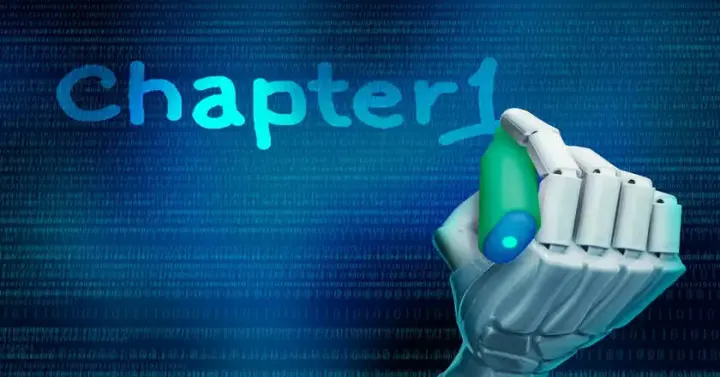Top 10 AI trends to watch in 2020
Artificial Intelligence has been the mainstream tech throughout the first decade of the twenty-first century. This charm is not going to dwindle even at the end of the second decade. The year 2019 has been the year of AI undoubtedly. The succeeding year 2020 has promised many more miracles to come.

Artificial Intelligence has been the mainstream tech throughout the first decade of the twenty-first century. This charm is not going to dwindle even at the end of the second decade. The year 2019 has been the year of AI undoubtedly. The succeeding year 2020 has promised many more miracles to come.
A lot of research has been going on in artificial intelligence. We cannot draw a chart depicting how AI is progressing. But, we can look around for technology that is dragging much attention.
1. Automated business process
Many business owners were intimidated by artificial intelligence. They fear AI will replace humans at work. This is not true. If carefully examined, we shall know that AI is helping us taking repetitive and labor extensive tasks. This is helping organizations to exploit real human brain potential for growth. Impact of Artificial Intelligence in business is unavoidable.
According to Forbes, only 23% of businesses have deployed AI into processing and product/service offering by date. More than 60% of businesses are somehow implementing Automated Business Solutions. This number is projected to increase by up to 80%-90% until 2022.
Forrester Research predicts that businesses augmented by AI to reveal new horizons will take margin worth $1.2 trillion, than those who lack AI. The last four years have witnessed a 270% increase in AI implementation.
How AI will help in Business?
Artificial intelligence is helping businesses using three factors
- Huge data collected from E-commerce stores, governments, scientific literature, social media, and devices.
- Knowledge-based machine learning evolution.
- Greater computing power enables multi-factorial analysis for future policy-making.
Examples of Artificial intelligence in business are Google, IBM, Uber, and Amazon using AI in their businesses. Their top priority department in business is automated customer care services. This trend is indicating that labor-based jobs are at threat. But this also enabling brain talents like data scientists to acquire more space in the upcoming AI industry revolution.
2. Cheaper automated healthcare
AI has promised to increase human life expectancy and efficiency by providing automated healthcare solutions. Since healthcare is the most important aspect of life, how AI can sit aside ignoring healthcare? The year 2020 will bring more advancements in the healthcare industry. Huge investments in healthcare automation and machine intelligence are expected.
Artificial intelligence and robotics are deployed to assist healthcare professionals in diagnosing diseases. These will take away the burden of manual surgery as well as other managerial tasks. Disadvantages to robotic surgery are very low.These tasks include noting down patients' history, billing, prescription, and reporting. This assistance will enable the doctors to focus more on patients than performing administrative tasks, ultimately enhancing their capabilities. There is a common fear that AI will replace doctors and paramedical staff. This is the wrong perception. AI is deployed to assist the medical staff not to displace them.
A lot of work has been going on in machine learning approaches to scan and analyze radiography data for faster and accurate disease diagnosis. Almost every pharmaceutical industry has installed robots as drug compounders to avoid dosage error.
The areas of healthcare helped by AI
- Radiographic image processing for quicker and error-free diagnosis.
- Robot-assisted surgery (robotic surgery).
- Virtual nursing assistants.
- Automatic healthcare administration including transcription, billing, and insurance.
- Error dosage reduction by robotic compounders in the pharma industry.
- Genomic profiling and personalized medicine.
- Computer-Aided Drug Discovery.
- Demographic analysis for disease expectancy.
3. Advanced cybersecurity
As more businesses are going digital, more threats are sharping their knives. The industries that are threatened the most by the fraudsters are retailers, financial institutions, restaurants, and insurance companies. Since these businesses are thriving in a rapidly increasing economy, their enemies are working harder to steal more juice. Cyber-security has never been in such a high demand until now. AI automation has promised advanced cyber-security backed by supervised models.
The main problem is that hackers and fraudsters have started building their own AI programs for infiltration. Every day, online businesses are breached and compromised. It is estimated that breachers may inflict the damage worth $5 trillion in 2020.
Previously, a supervised model was implemented to secure unwanted entry. This model tags false positives and false negatives to ensure safe passage. AI hackers understand this defensive approach and they appear with new algorithms each time they attack. So the year 2020 has brought a new safeguard approach called Generative Unsupervised AI, which is part of third-wave AI.
This Generative Unsupervised AI system offers an automatic detection system. How this model is trained? Well! This model is applied to a network for 7 full days and it studies all the traffic fluctuations across the network. Then it creates a baseline that is thought to be safe. Any signal fluctuating this baseline will be considered as a threat and network security personnel will be notified. Such training will make this program very effective against zero-day attacks.
4. AI mediated media and entertainment
The media and Entertainment industry has expanded tremendously past few years. As technology awareness is increasing among the public, more insights about their favorites are now available. In the past introduction of TV black boxes have enabled companies like Neilson to gather the data about what TV show is being watched by most viewers. This information helps the media to decide what program to continue. Similarly, TV ads rates are set upon this information. The most favorite TV show gets the highest advertisement rate.
This is the era of cordless streaming and customized viewing. For example, Netflix is offering cloud-based streaming services to watch millions of movies and TV shows. Cordless streaming services like Netflix, Hulu, Disney Plus, Amazon Prime Video all are tracking the watch history of users. This data helps these companies to customize user preferences and suggest them to watch related shows.
Media houses are working on automatically generated reports based on robust data collection. Social media is producing a huge amount of data and all this data is scraped by media companies to analyze the social trends.
5. Effective personalization
All of your social activities are monitored, stored, analyzed and utilized by respective platforms. This huge data containing trillions of stats and patterns are then used to generate user preference and personalization. Have you ever been surprised to see ads on your Facebook homepage that you previously searched on Google? Social media platforms use cookies from your browser and stored in their databases. This information is then used to present highly related and preferred products on your profile. In this way, these search and media engines earn their capital through targeted marketing. Facebook ads and Google ads are examples of such data manipulation.
6. Aerospace and flight operations controlled by AI
Delta Airlines has launched an AI-supported weather prediction system to better flight operations at the start of 2020. The name of the program has not been uncurtained yet. By this march, the program will be trained to collect weather disruptions and irregular data. After that, the program will be tested to ensure the seamless quality of flights. This program will consider all possible weather and environment parameters for highly accurate predictions. For example, when a hurricane strikes, the atmosphere has a certain intensity of air pressure and humidity, air direction etc. These attributes will be the key indicators to be fed into the program. “Cancel the cancellation” is a keynote phrase of the Delta Airline for this program. Exactly what algorithms are going to be used is still not shared. However, Delta’s October press release revealed the difference between 5500 cancellations in 2010 and 55 in 2018. This could be possible with the use of artificial intelligence.
AI in space missions:
Another country is getting prominent in space technology and expeditions. You guessed right. We are talking about India. This year 2020, India is going to launch “Gaganyaan” a crewed orbital spacecraft piloted not by humans, but a semi-humanoid robot named “Vyommitra”. This robot has certain capabilities like switching engines, handling capsule, acting as flight assistant, who can talk, cooperate and recognize fellow human pilots.
7. Artificially Intelligent robotic chef
2020 will be a more like “job intense” year. As businesses are growing and more competition is being triggered in the market, the job requires much attention now. When you sign out from the job, you might not be in the mood to go home for cooking and dining out can be an expensive choice. Don’t worry! You can have a robotic chef at home that can be controlled through your smartphone and can cook anything you want. Moley has already offered a fully functional chef robot worth $15000 in 2017. But in 2020, Samsung has appeared with a new robot, presented in CES 2020, and carries a knife in its hands. CES 2020 had a booth representing Samsung's Bot Chef. This bot successfully made a fresh salad for visitors.
Moley’s Robotic chef can cook 2000 meals. It is supported by two articulated robotic arms and has an iTunes type library of different recipes. This robot has the capability of recording human chef activities. It has successfully recorded and performed all the activities of Master Chef Tim Anderson, winner of the BBC Master Chef title. The best thing about Moley is, you can operate it using your smartphone remotely.
8. Autonomous Vehicle
Self-driving cars are promised by many AI robotic companies in the past years. This promise has been fulfilled up to some extent by now. In 2020 you will see that promise fulfilled. Aurora came out the first to meet the expectations. Aurora has tested its first autonomous drive while two safety drivers were at emergency backup and a reporter was there as a witness. The car ran at 20 MPH speed and successfully arrived at its starting position. This project was funded by Amazon and raised $669 million as funding. Aurora’s founder Chris Urmson has been hailed as “Autonomous Henry Ford”.
Uber is going to launch its first autonomous ride sharing in Washington DC. But this would not be driver free tour. First, Uber cars will go on a test drive with safety drivers to record all the routes, passages, hurdles and other traffic patterns. We hope to see this working autonomously by the end of 2020. After successful testing, Uber has promised to launch its entire autonomous fleet on road. This experimentation was halted before due to the death of a walking passenger by autonomous Uber. After 9 months, Uber was allowed to continue its experimentation.
9. Advanced natural language processing
Natural Language Processing is a core area of Artificial intelligence to transfer conversational capabilities from humans to robots. The idea is to achieve a high level of cognitive speaking through neural networks and deep learning. The data uploaded to social media and internet is huge. This gives the AI business companies and the opportunity to utilize this data for definitive language patterns and context. It is estimated that the advanced NLPmarket will reach $13.4 billion by 2020.
What would be the manifestations of NLP? Well! You might have heard about chatbots. These chatbots are fed with trained data from trillions of word expressions on the internet. The idea is to acquire a perfect customer-robotic interaction level in business transactions.
The same data can be used to structure the scattered data about customer’s feedback and product overview. This may provide a clear picture of marketing trends, user preferences and transactional efficiency.
10. Autonomous lethal weapons
Unfortunately, scientists worldwide are working more on robotic weaponization than on human benefits. Many countries are investing billions of dollars in weapon industry to synthesize autonomous weapons.
The Pentagon has asked Congress to increase defense budget under the head of autonomous weaponization. For example, the American navy has demanded $447 million for unmanned surface vehicles while the Pentagon has a plan to spend $4.6 billion in weapon automation controlled by AI. Such precautions are pre-emptive measures against the US’s biggest combat equals Russia and China. The countries involved in this weapon race are the US, China, Russia, North Korea and the European Union.
Cheers :)


